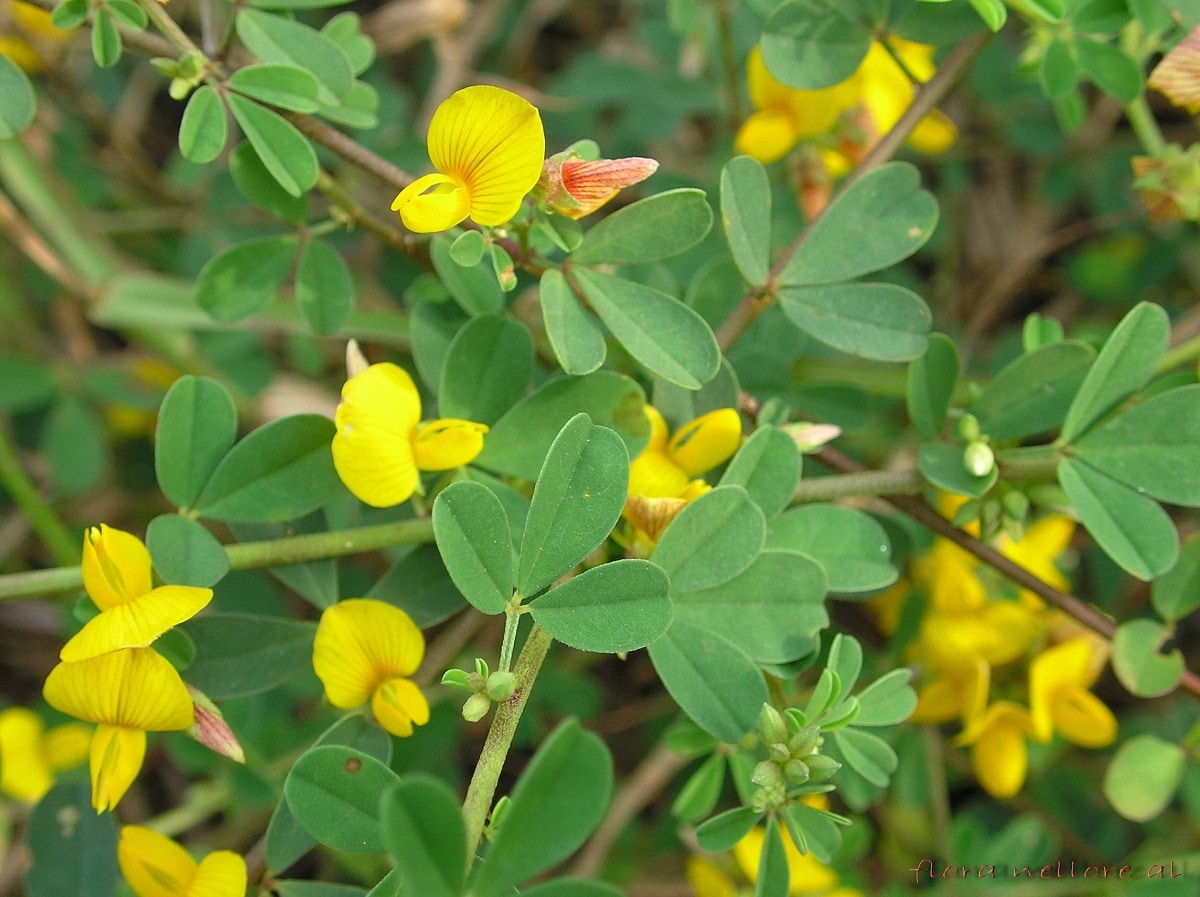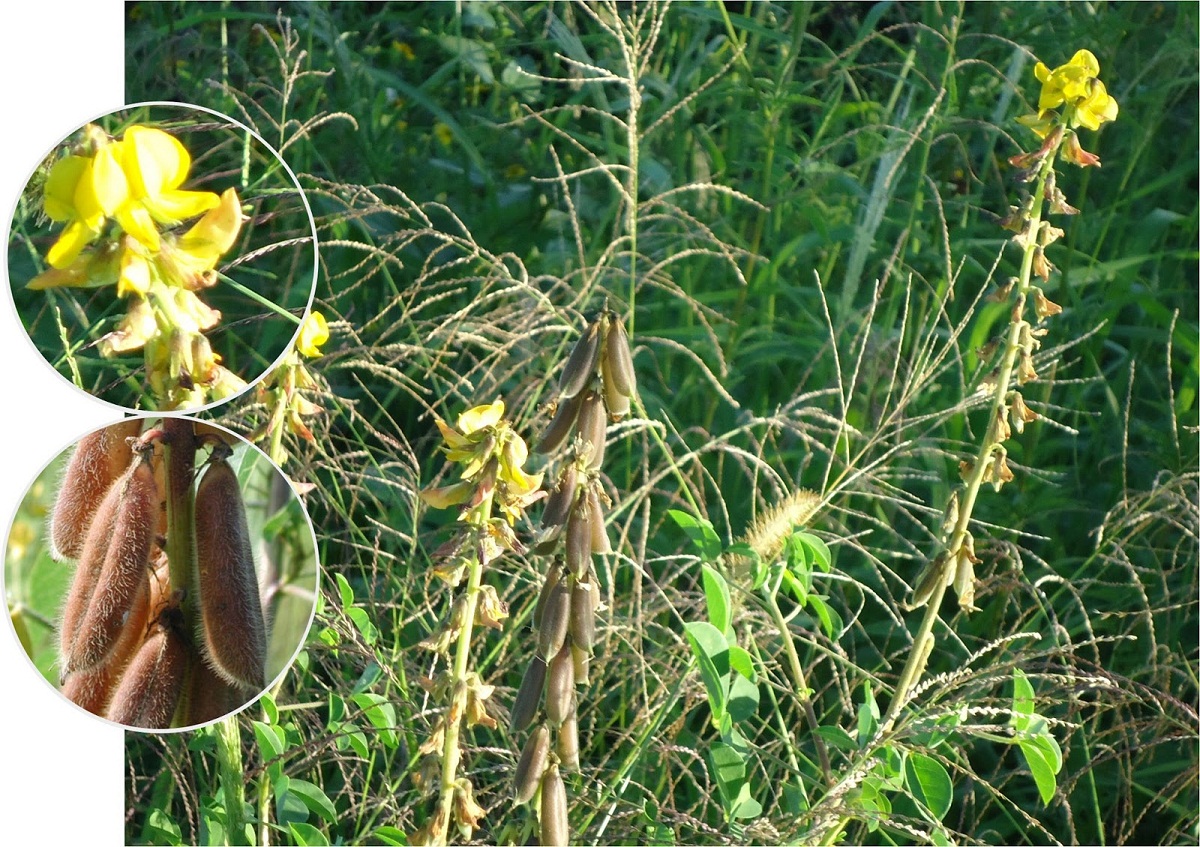
The Crotalaria is a plant whose main function is to decorate patios and gardens. Many of them with healing properties and multiple uses. But in this case, it is herbaceous species known by many names, this being the most common.
We will start by talking a little about its origin so that you know where it comes from and where it can be found today. Thus, we will also offer you some main characteristics, part of the various uses of this plant and other important points of the plant in question.
Origins of the Crotalaria species

For those who do not have the slightest knowledge of where the Crotalaria juncea, this is a plant that is native to two asian countries: Pakistan and India. But as such, for many centuries, it has been planted in Southeast Asia. And contrary to the cultivation of other plants, the sowing of this species is carried out with the intention of obtaining green manure.
It is currently distributed in tropical and subtropical countries. It can be purchased in various ways, but as such, the production and shipment of seeds comes from India, Hawaii, Colombia and much of South Africa, as this is one of more than 400 spices that exist worldwide.
Features
It is time to move on to the most distinctive characteristics of the herbaceous plant. A) Yes, when you see one of the many species, you will know how to identify it and determine if it is the Crotalaria juncea or not. This plant is a kind of annual herb that grows in the form of a shrub.
It has oblong-lanceolate leaves, and in general, they do not grow more than 13 cm and have a maximum width of 3.5 cm. The texture of its leaves feels like a hairy forearm.
Moreover, the Crotalaria shrub has a very strong root and these develop and expand horizontally. When the roots are old enough, they develop nodules which harbor cowpea-like rhizobia.
As for the visible part, it is very common for the branches to be detached from the ground half a meter away. Of course, as long as the number of plants of the same species is not so abundant.
Depending on the growing conditions and the conditions of the days, the plant can offer you flowers after 8 weeks or so. For example, if one is planted in Florida - USA in the month of May, by the beginning of September the plant will have flowers with an intense striking yellow.
We can say that this is a pretty humble plant, because unlike other species that require a soil rich in minerals and nutrients, since this plant does not need much of this. However, it has a very high potential in terms of biological fixation.
Likewise, it is a plant that can produce large amounts of biomass. So it is not surprising that you see positive news and that the Crotalaria is the protagonist. Very few plants and species of shrubs manage to benefit other plants.
Generally, dealing with weeds is the work of gardeners and people with natural spaces in their homesSince it grows in such a way that it does not give rise to weeds and the coverage it offers is such that it protects the soil from erosion.
On the other hand, having a certain density of Crotalaria helps to have much more organic mattera, in such a way that it can favor the soil in question as well as recycle the nutrients from the soil around it. It should be noted that this is used in some plantations at an industrial level to control pests and promote microbiological activity at the same time.
Uses
The use will depend on the region in which you are. For instance, in Florida Crotalaria is used mainly by horticulturists, so that they can be used either as green manure or as a commercial crop for summer and winter.
Also, thanks to the rapid production of biomass, this plant is introduced in short rotation production systems in the state of Florida. On the other hand, in case of sowing in summer or at least at the beginning of the season in Homestead, it can grow 2 meters in height in just two and a half months.
That is why for this region, this plant is the favorite mainly for its insecticidal properties and weed control. In the case of Brazil, it is used in soy plantations to control insects and other conditions that do not favor the plantation at all.
It is important to emphasize at this point, that not all share the same characteristics against pathogens. That is why it is recommended to establish an analysis of the rotation of each system and / or region. This will help prevent the plant itself from multiplying the pathogen in question and doing the opposite of what we have been talking about.
Other alternative uses that you should know

- High quality forage crops.
- It is used as hay when they are not green.
- Useful for the use of clothes and ropes.
- It serves as food for pigs and horses, as long as it is the seed of Crotalaria.
- The plant can handle high amounts of nitrogen very well.
Since it is a herbaceous species, its main use is focused on plantations. Well, in order to sow and produce healthy and strong bushes, the seed must be placed very shallow in the ground, in addition to that the ambient temperature must be between 21 ° and 38 ° C at most.
The humidity in conjunction with the heat, tremendously favors the growth of this species. Although a more stable climate and a little cooler, also allows the growth of Crotalaria. But the difference is that it will be very slow and they are more likely to be injured and / or die from some pathogen.
Therefore, you should not worry if the soil where you intend to sow it is not very fertile. As we well said, this is a plant that does not need many nutrients and minerals in the ground to grow. What if the soil has to have a good drainage system and not have alkaline and / or sodium characteristics.
The truth is that this is a plant that is proof of everything. If you have a plantation or intend to have one, you should study and consider the possibility of implementing shrubs of Crotalaria juncea.